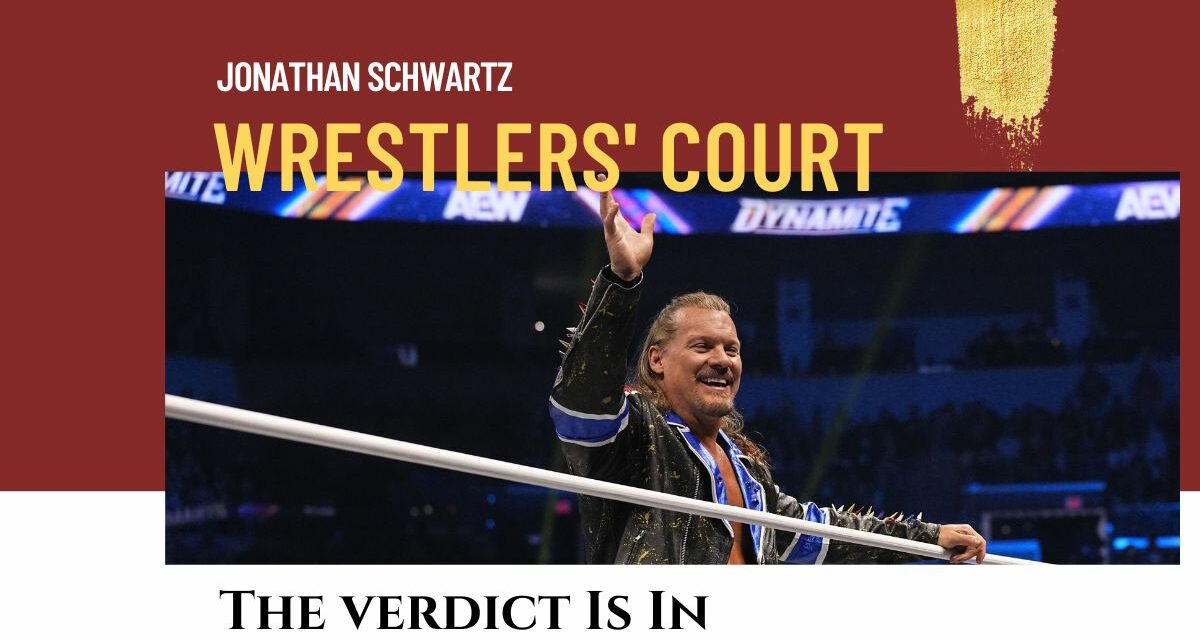A pro wrestling friend of mine, Evan Ginzburg, often says “Ageism is the last acceptable form of prejudice.” I respectfully disagree. Current events show that there are many forms of prejudice which are not only acceptable but normalized and propagated by even our most cherished institutions. It sucks, but I’d suggest this has always been the case. It’s just louder right now.
But I write about pro wrestling, not the real world. I’ll focus instead on my hobby, where people think tribalism amounts to WWE vs. AEW.
Watching this week’s editions of RAW, SmackDown and Dynamite has me reevaluating my position on aging wrestlers, at least somewhat.
I often mention wrestlers’ ages in this forum. I once wrote a whole column about Ric Flair’s ill-advised last match, which he undertook well into his 70s (and during which he passed out twice — and has since claimed that he suffered a heart attack during the bout; Flair would still come back again if a promoter would let him). I highlighted several wrestlers who competed well past the age where they’d collect their pensions if wrestling offered them — which, come to think of it, is likely a reason why so many stay on for so long.
I was and still am critical of many of these acts. Pro wrestling is a tough physical pursuit. Wrestlers need to look the part, and a good portion of the skill set involves lifting and throwing large men around the ring and reacting to feigned attacks quickly and convincingly.
Assuming they stay clear of injury or addiction or jail, wrestlers may already have longer productive lives than most ‘legitimate’ athletes. The average NFL career is a shade over three years. MLB careers run less than six years. NHLers and NBA players average four to five years.
There are plenty of players who augment their shorter runs in top tier sports leagues with extended careers in smaller outfits or overseas. Baseball players can play on for decades in Japan or across Mexico and into South America. Hockey players barnstorm Europe or Russia. China and Turkiye have emerged as profitable destinations for former NBA stars, and assuming they don’t break local laws; some Russian teams pay WNBA players better than their home country. This is consistent with pro wrestling. Stars parlay their ‘big league’ televised runs with national promotions like WWE, WCW or ECW (back in the day) into lucrative stints in Japan or Mexico or Puerto Rico (which is technically part of the United States but occupies its own niche in pro wrestling), bigger independent gigs or endless smaller independent shows.
Pro boxing and mixed martial arts careers are more variable. These pursuits lack defined paths to their top tiers-an amateur background can help but there are plenty of fighters who make it big without that pedigree. And ‘top tier’ in the fight game is loosely defined. Most recently I’ve noticed several notable former UFC fighters and pro boxers gravitate towards bare knuckle boxing promotions, which are pushing hard to be recognized as legitimate outfits.
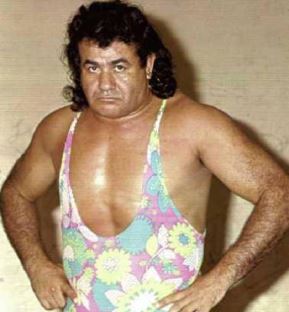
Gypsy Joe
Wrestling draws its stars and supporting players from all walks of life, including other athletic pursuits. Promotions vary considerably in size, but the world is small enough that a recognizable name can attract attention to a small show and still get media play. Today, the internet extends careers as it offers a free medium to publicize even the muddiest of outlaw mudshows but if you go back to your dad’s ancient stack of Apter mags you’ll see your share of Gypsy Joes and Pampero Firpos and Bugsy McGraws and Moose Cholaks and Bulldog Bob Browns making towns long after the world moved on.
Occasionally an enterprising wrestler grants himself a new lease on life with a dramatic late-career gimmick that obscures his age — Johnny Walker was a relative unknown. Mr. Wrestling II is a legend. Ditto for Hamilton, Ontario’s Dewey Robertson vs. Parts Unknown’s Missing Link, or ‘Rebel’ Joe Scarpa vs. ‘Chief’ Jay Strongbow.
The collaborative nature of pro wrestling allows a talented and cooperative opponent to cover for diminishing strength and speed and skill but past a point, these things just aren’t credible. You might be curious about who would win a fight between grandpas (and there are plenty social media sites which suggest such a market exists) but they’re not my jam.
My friend Evan argues that if I go to a concert, it is unkind to fault an older singer for not being able to hit the highest notes. He’s right, but to me that speaks to a difference between pro wrestling and other forms of entertainment and to the importance of managing expectations. Pro wrestling sells itself on physical spectacle. I can accept a singer cutting things back by an octave or not being able to hold a note like they used to. I feel cheated when they refuse to perform their hits outright, or talk through the set instead of singing, or rely so heavily on their backup singers (or worse, a recorded track) that the evening feels like a tribute rather than the real thing.
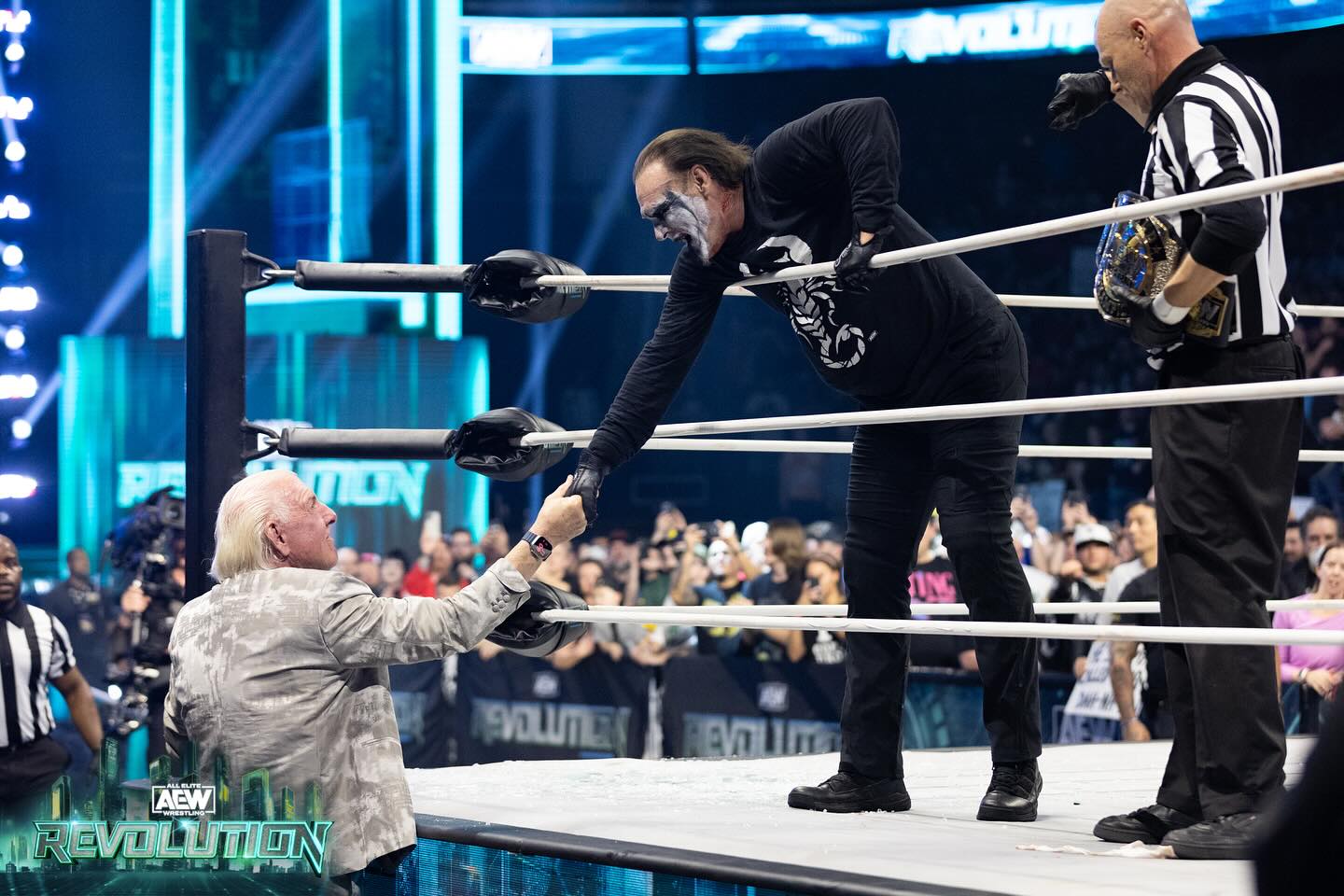
Sting and Ric Flair shake hands at AEW Revolution on March 4, 2024. AEW photo
More important, pro wrestling is based on the outsized personalities of its performers. Especially given how broadly wrestling draws its characterizations, it is likely that an act ages badly (Ric Flair’s womanizing and Jerry Lawler’s political incorrectness spring to mind. Flair remains a social media mainstay, often for complaining on Twitter. Lawler has been recovering from a stroke; his contract with WWE was quietly allowed to lapse at the end of 2023) or the audience decides we’ve just seen enough. When one makes a living in a public setting, it is better to leave the stage with the audience wanting more. With utmost respect, I just don’t need to watch the likes of Flair or Lawler or Sting or Hulk Hogan, knowing there is no payoff to their appearances (or even if there is, if Flair’s recent physical involvement in the tail end of Sting’s retirement storyline is any indication). Hogan recently appeared on the religious TV show The 700 Club and put himself over with God while selling religious T shirts co-branded with his “Hulkamania” logo. One day, I wonder if he will arrive at the Pearly Gates only to hear, “That’s a no from me, Brother” from Saint Peter.
Historically, an older roster was seen as a liability. Perhaps it has something to do with Vince McMahon raiding hotter (often younger) talent from the territories to fuel his national expansion. Verne Gagne’s AWA was particularly heavily criticized for pushing aging stars like himself, Baron Von Raschke, Mad Dog Vachon, Dick the Bruiser and the Crusher and Nick Bockwinkel, at the expense of emerging acts like Hogan. Gagne’s conservatism when it came to making Hogan his champion is seen as a fatal mistake, but Gagne and other promoters were not completely wrong to mitigate the risk of losing top acts to the competition.
During the Monday Night Wars WCW grew on the strength of more established (older) former WWE talent. WWE openly mocked their competition for hiring Hogan and “Macho Man” Randy Savage, and pushed a “New Generation” of stars in their stead. It should be noted that this New Generation mostly flopped at the box office; it took a few iterations until WWE hit it big again with the “Attitude Era.” It should also be noted that throughout this period younger headliners were abetted by an older supporting cast, many of whom had wrestled for decades before joining WWE. Until recently WWE was shy to acknowledge its performers’ ages unless that information was integral to a plot (like Bob Backlund’s maniacal comeback, or the Road Warriors’ disastrous return as midcarders). This may be changing. In the go-home show before Backlash AJ Styles began his promo against Cody Rhodes by acknowledging his advanced age.
Wrestlers seem to age differently now. Whether this is due to advances in diet and training (and prayers, and especially vitamins) or a front office that recognizes the need to balance youthful athleticism with experienced match-callers, I don’t know.
I do know that WWE has gone back and forth between Paul Levesque’s preference to sign established talent from the independent scene (and internationally, given the Guerillas of Destiny’s debut and the beginning of my prophecy unfolding) and Vince McMahon’s insistence that any raw athlete can become a superstar after a stint in WWE developmental (most recently disproven by a series of NXT releases including Olympic gold medalist Gable Steveson).
With McMahon apparently selling through his shares in WWE’s parent company TKO, it looks like Levesque’s vision will hold sway as the next-next generation of talent gets ready for primetime.
Meanwhile, the WWE World Champion Damien Priest won his first title at over 40 years old, while Cody Rhodes is pushing 40 in his first WWE championship reign. Rhodes won a barnburner of a match against 46-year-old AJ Styles at Backlash. Featured talents like Santos Escobar, LA Knight, Braun Strowman, Kofi Kingston, The Miz, Finn Balor, Randy Orton, Shinsuke Nakamura, the Good Brothers, Carlito, Rey Mysterio, Sheamus, Bobby Lashley, R-Truth and CM Punk are all over 40 years old. That doesn’t include special occasional attractions like Trish Stratus, John Cena, Brock Lesnar or The Rock. At 51, The Rock’s recent run to WrestleMania was especially impressive; he looks bigger than he did during his full-time wrestling days and after a shaky start returned to in-ring form.
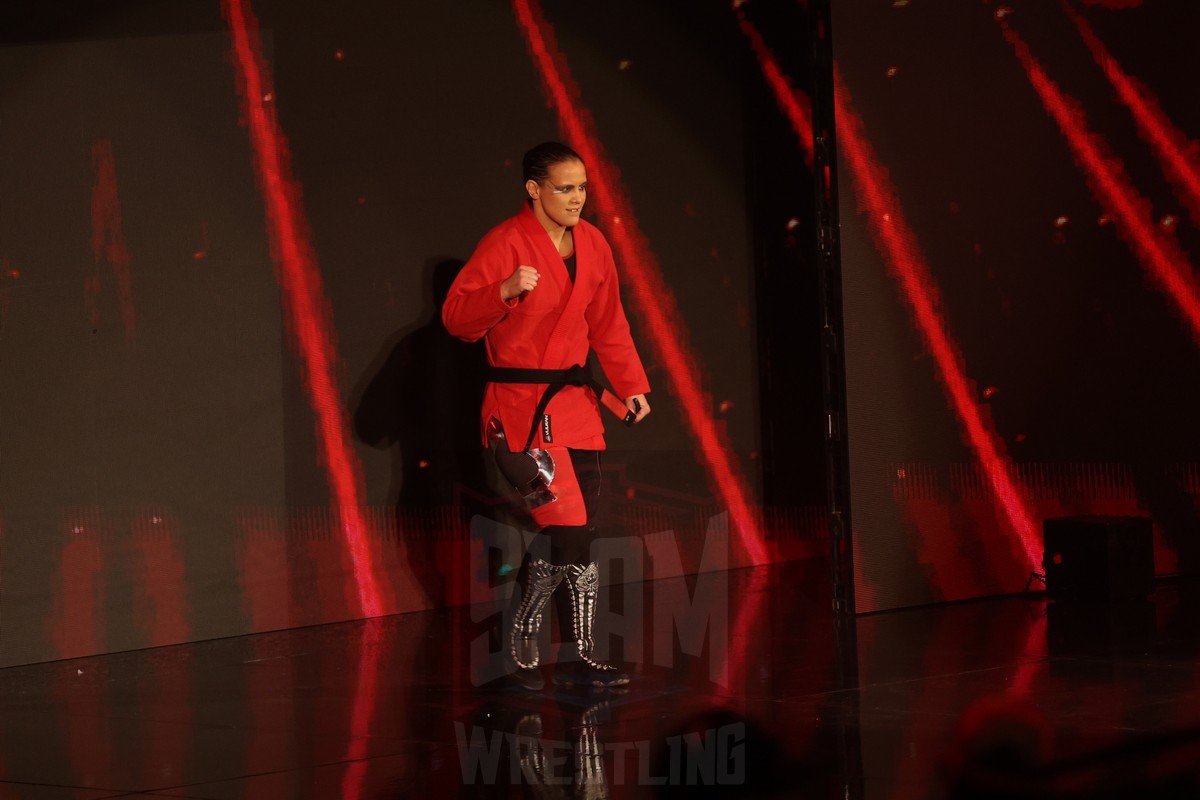
Shayna Baszler at WWE Monday Night Raw at the MVP Arena, in Albany, NY, on December 4, 2023. Photo by George Tahinos, georgetahinos.smugmug.com
On the women’s side, pro wrestling has often been cruel to aging performers, especially when the division has focused more on pushing models than athletes (even though WWE regularly featured the Fabulous Moolah and Mae Young well into old age). Natalya, Asuka, Shayna Baszler and until recently Tamina have all been involved in current angles even if they would be unlikely solo champions going forward.
The list of older WWE performers is even more impressive when you consider not only their ages but how long their respective runs in WWE have been in an era where for the most part WWE was the only game in town.
Competition between wrestling promotions gives performers the opportunity to extend their careers even further, appearing before different audiences and giving brand-loyal fans the chance to miss them before they go back-or at least providing a venue for a late-career payday and a better spot on the card against a new set of opponents.
AEW seems committed to this role. AEW initially branded itself as a younger, more athletic, sports-driven alternative to WWE. It has consistently cherry-picked hot independent and international acts resulting in fun matches which are often sadly undermined by inconsistent characterizations, incomprehensible plotlines and a tendency for talent to appear and disappear for months at a time depending on who’s got Tony Khan’s attention. From its early days AEW has leveraged older talent like Christopher Daniels, Colt Cabana, Lance Archer, Billy Gunn, Jeff Jarrett and Dustin Rhodes — some of whom have gotten over successfully on their own merits, others (Matt and Jeff Hardy spring to mind) less so.
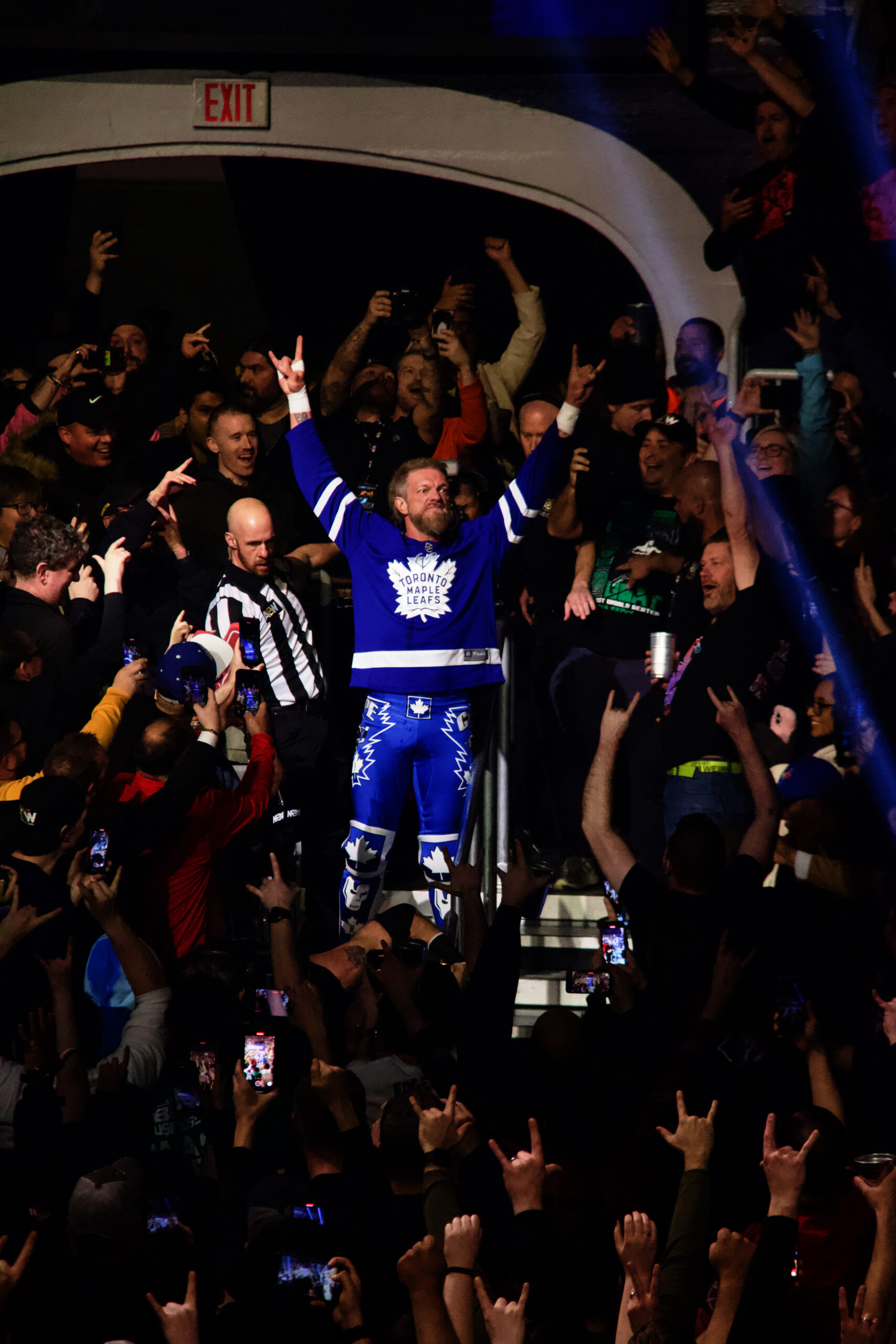
Adam Copeland vs. Christian Cage in an “I Quit” match for the TNT Championship at AEW Dynamite at Toronto’s Coca-Cola Coliseum on Wednesday, March 20, 2024. Photo by Steve Argintaru, Twitter/Instagram: @stevetsn
Improbably, two of AEW’s hottest acts are 50 years old. When Adam Copeland signed with AEW after his WWE comeback I was deeply skeptical. He could have turned this run into a victory lap but his performances on the microphone and especially in the ring are as intense as ever — maybe more so since WWE seemed to fetter him in the interest of protecting his injured neck. Copeland’s pursuit of the TNT Championship worked because it was the stakes in a feud against former tag team partner (and fellow 50-year-old) Christian Cage. Copeland beat Cage in a hellacious street fight a few weeks ago and continues to put on solid matches. He is now paired with the House of Black, which will hopefully raise Malakai Black’s profile and earn him a title run, as older stars are still best used putting newer talent over. For years, Black has been part of an unenviable club in AEW — a relatively high-profile former WWE star who never quite made it out of the mid-card there, and who has languished in his new home. Maybe Copeland helps him find his edge.
Cage has been a revelation since his own return from injury. I was impressed when he notched an Impact World Championship, and marvel at his commitment to his patriarchal ‘evil stepdad’ heel persona. He has been the best part of any Dynamite episode on which he has appeared, so much so that he is currently in line to main event the next AEW pay per view against new World Champion Swerve Strickland. Copeland and Cage are both working at a pace that would have been unthinkable for a pair of 50-year-olds even a few years ago. Back in the day you might have said the same about the likes of Terry Funk or Ric Flair, but by this point in their careers they had slowed down considerably — Funk enjoyed main event success into his late 40 to early 50s with WCW and ECW, but he had already transitioned into more of a charismatic brawler. Injuries had also reduced Flair’s offence to a series of chops, “Woos”, flops and figure-fours. I don’t think either man would work a complete match at today’s pace unless they had the advantages set out above.
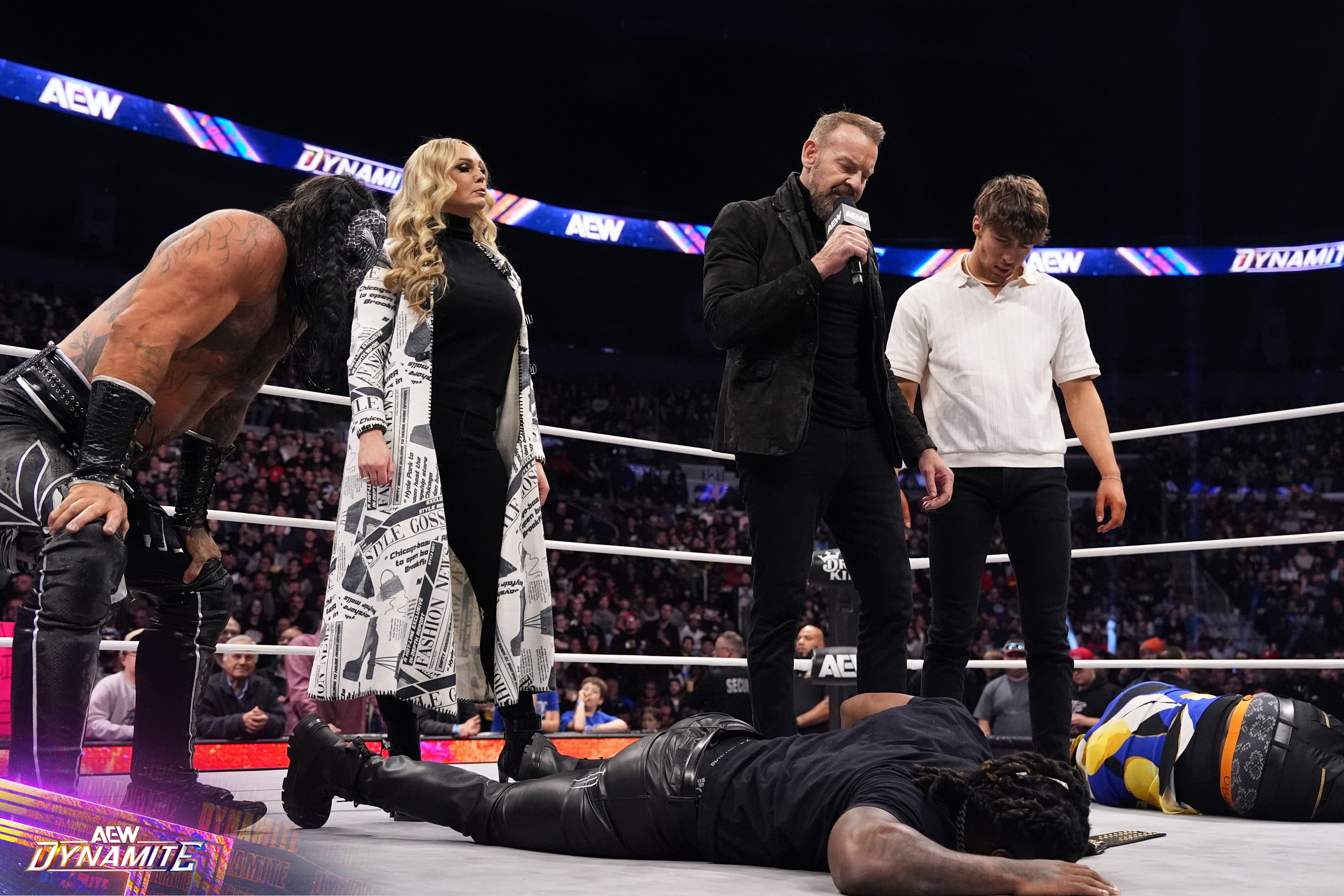
Christian Cage looks down at Swerve Strickland at AEW Dynamite in Winnipeg, Manitoba, on May 1, 2024. Photo by Lee South, AEW
I started this column with Chris Jericho in mind. Never mind the fact that he helped launch AEW after over 20 years with WWE. Today, Jericho is improbably stealing everyone’s thunder yet again with his “learning tree” gimmick. After winning the FTW title from Hook Jericho has renamed it the ‘For The World’ championship and added his own faceplate. This has driven OG champ and current AEW color analyst Taz apoplectic with rage and brought an element of humor to the show as Taz tries to inform the audience, “That’s not what FTW stands for” without using the actual words, which court a storyline punishment for their profanity.
At first, I hated the decision to put yet another title on Jericho. Then I realized that was the point. Jericho’s ‘learning tree’ gimmick follows similar logic to his Ring of Honor title run; in both cases Tony Khan is trying to build visibility for a title with a distinct legacy that caters to a rabid but niche fan base. In both cases he is using Jericho as the foil for that fanbase. As ROH champ Jericho was openly contemptuous of Ring of Honor and its principles, and despite his participation in the actual ECW he has continuously positioned himself as a splashy, self-actualized sports entertainer — not the kind of gritty hardcore champion embodied by Taz.
Jericho has transitioned his character into the worst kind of pro wrestling trope: the dissipated former star who hangs on too long, suppressing younger and better talents while parading himself on-screen. If Christian had turned himself into AEW’s resident patriarchal heel, Jericho is the greasy uncle who takes you under his wing, portraying his self-interest as altruism. I half expect him to start bedecking himself in Taylor Swift style friendship bracelets — the better to merchandise, my dear.
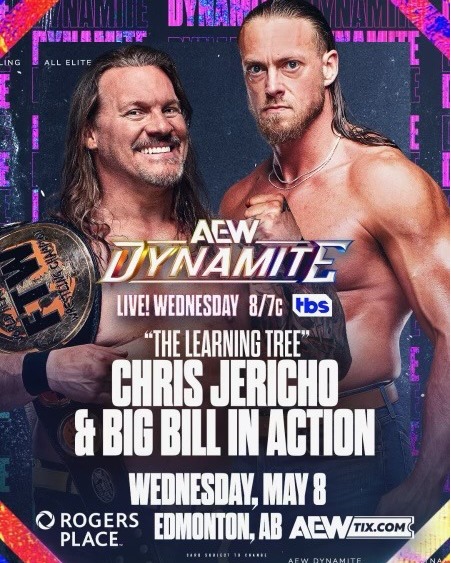
Even the AEW advertising has been promoting Chris Jericho’s Learning Tree — here upcoming in Edmonton against Big Bill.
From the long lank hair pulled over his bald spot to the unfashionable goatee to his return to trunks rather than tights, Jericho is actively courting the kind of ageism and body-shaming that WWE star Sheamus received on his return to RAW from injury. I would argue that it’s purely intentional. Jericho has endured several rounds of body-shaming over the years. He tends to fall in and out of ring shape and has written about the subject in his many autobiographies. Jericho is a savvy performer who understands that sometimes a heel needs to debase himself to generate heat-literally “showing ass.” Why else would he return to the trunks at a stage in his career where other wrestlers start performing in T-shirts or more. For comparison’s sake, see 53-year-old Jericho wrestling in his trunks against Katsuyori Shibata vs. Terry Funk in full tights plus a T-shirt and a bandana covering his own receding hairline, or Sting wrestling his entire AEW stint in pants and long sleeves. Heck, Christian is a contemporary of Jericho’s. He is in incredible shape yet he has made a sleeveless turtleneck a key part of his gimmick and ring attire.
Jericho’s work is smart. Like Funk, he takes advantage of hardcore wrestling gimmickry; in his last match he goofed on the usual ‘extreme wrestling’ bag of thumbtacks when he unleashed a sack of hockey pucks on his opponent (and threw one in Shibata’s face to break a submission hold). Jericho can still pull off the occasional aerial spot, though these come less frequently, which makes sense given his role as a heel. Like Copeland and Christian, Jericho’s mic work is as sharp as ever. His overall presentation makes another world championship unlikely but that’s not the point. In playing up his age and leaning into the audience’s perceptions he is breaking the Fourth Wall down. More interestingly, by encouraging the crowd to boo his age, Jericho may be endearing himself to a subset of wrestling fans who grew up (and are growing old) with him. Nobody likes to feel like they’re past their prime, and in the face of ridicule — especially when one’s performance is as sharp as ever, I can see a segment of AEW’s ‘serious’ fans — taking Jericho’s side.
Playwright David Mamet once wrote “Old age and treachery will always beat youth and exuberance.”
What could be more pro wrestling than that?
TOP PHOTO: Chris Jericho at AEW Dynamite in Winnipeg, Manitoba, on May 1, 2024. AEW photo
RELATED LINK
